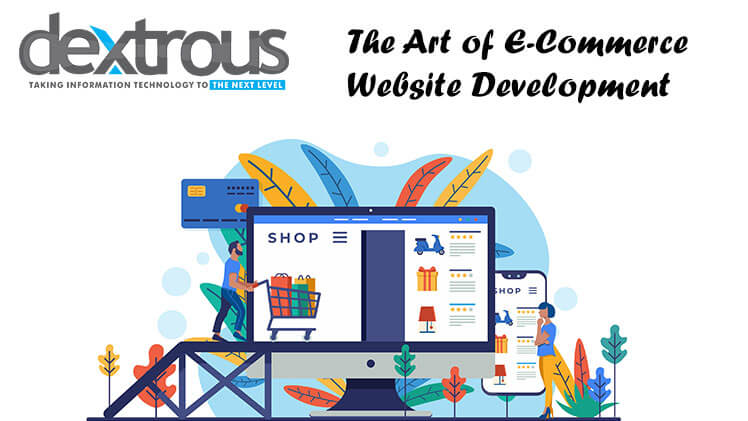Creating a Seamless Online Shopping Experience: The Art of E-Commerce Website Development
Introduction: In today's digital age, online shopping has become an integral part of our lives. As an e-commerce business, providing a seamless online shopping experience is crucial for attracting and retaining customers. In this blog, we will explore the art of e-commerce website development and discuss the essential elements and strategies for creating a seamless online shopping experience that delights customers and drives conversions.
-
User-Centric Design: To create a seamless online shopping experience, prioritize user-centric design. Understand your target audience, their preferences, and their browsing habits. Design a visually appealing and intuitive interface that is easy to navigate. Use clear and consistent labeling, well-organized categories, and intuitive search functionality to help users find what they are looking for quickly and easily.
-
Mobile Responsiveness: Mobile devices account for a significant portion of online shopping traffic. Ensure your e-commerce website is fully optimized for mobile devices, providing a seamless experience across different screen sizes. Implement responsive design techniques to adapt the layout, images, and content to fit various devices, enabling users to shop conveniently on their smartphones or tablets.
-
Fast Loading Speed: In the fast-paced digital world, customers have little patience for slow-loading websites. Optimize your e-commerce website for speed by minimizing file sizes, leveraging caching techniques, and optimizing server response times. A fast-loading website not only improves the user experience but also positively impacts search engine rankings and reduces bounce rates.
-
Intuitive Navigation and Product Filtering: Make it easy for customers to navigate through your e-commerce website and find the products they desire. Implement a clear and consistent navigation menu with logical categorization. Use intuitive filtering options, such as price range, size, color, and other relevant attributes, to help users narrow down their search and discover products that match their preferences.
-
High-Quality Product Imagery and Descriptions: Visual appeal is crucial in e-commerce. Use high-quality product images that showcase your products from multiple angles, allowing customers to have a better understanding of what they are purchasing. Provide detailed and accurate product descriptions, highlighting key features, specifications, and benefits. Clear and concise information helps build trust and aids customers in making informed purchasing decisions.
-
Smooth Checkout Process: Simplify the checkout process to minimize friction and cart abandonment. Implement a streamlined and user-friendly checkout flow, requiring only essential information for the purchase. Offer guest checkout options to eliminate the need for creating an account, although providing incentives for account creation can help encourage customer loyalty. Clearly display the total cost, including taxes and shipping fees, and offer multiple secure payment options to accommodate different customer preferences.
-
Trust and Security: Building trust is paramount in e-commerce. Display trust badges, security certificates, and payment icons to assure customers of the safety of their personal and financial information. Implement secure sockets layer (SSL) encryption to protect sensitive data during transmission. Clearly communicate your privacy policy and terms of service to establish transparency and instill confidence in your brand.
-
Personalization and Recommendations: Deliver personalized shopping experiences by leveraging customer data and implementing recommendation engines. Use customer browsing and purchase history to offer personalized product recommendations, cross-sells, and upsells. Tailor content and promotions based on individual preferences, increasing engagement and customer satisfaction.
-
Feedback and Reviews: Encourage customer feedback and reviews to build social proof and trust. Display customer testimonials and reviews prominently on your e-commerce website. Implement a rating system to allow customers to provide feedback on products and their overall shopping experience. Respond to customer inquiries and address any concerns promptly to demonstrate excellent customer service.
-
Continuous Optimization and Analysis: E-commerce website development is an ongoing process. Continuously analyze website data and customer behavior using analytics tools. Track key performance indicators such as conversion rates,






.jpg)



















0 Comments:
Leave a Reply